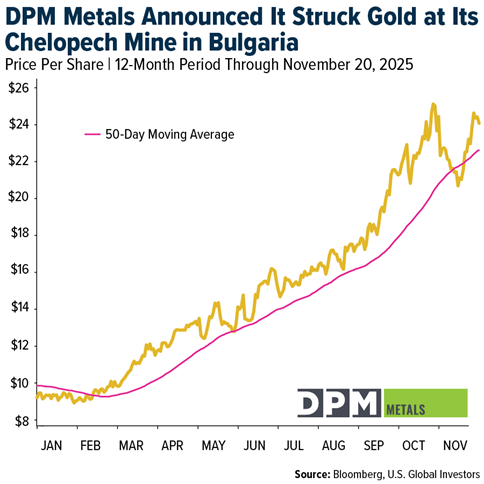Strengths
- The best-performing precious metal for the week was gold, still down 0.96%. Gold is set for a small weekly decline as rate-cut expectations fade, though geopolitical tensions, after Ukraine and European allies rejected key parts of a U.S.-Russian peace framework, helped bullion trim losses. Despite short-term pressure from stronger jobs data and higher rate expectations, gold remains supported by haven demand amid global uncertainty and is on track for one of its strongest annual performances since 1979.
- Tether’s aggressive expansion into bullion is drawing gold closer to the speculative orbit that drives crypto price swings. The stablecoin issuer has been purchasing more than a ton of bullion a week and signaled its ambition by hiring HSBC’s top metals traders, according to Bloomberg.
- China added an estimated 15 tons of gold to its foreign exchange reserves in September as central banks accelerated bullion purchases after a seasonal summer lull, according to Goldman Sachs. Analysts estimate central bank purchases totaled 64 tons for September, more than tripling the 21 tons in August. Purchases likely continued in November, said Goldman.
Weaknesses
- The worst-performing precious metal for the week was palladium, down 2.85%. The LME’s decision to stop administering the benchmark platinum and palladium auctions threatens price discovery by disrupting a long-established, highly liquid mechanism used to settle contracts across the industry. Transitioning to a new, yet-to-be-named venue introduces uncertainty, potentially reducing transparency and widening spreads in already thinly traded palladium markets.
- According to CIBC, Barrick Gold expects annual gold production to come in at the lower half of its maintained guidance of 3.15–3.50 million ounces. The company noted on a conference call that it expects production guidance for 2026 could come in relatively flat year-over-year.
- According to Goldman, gold production moderated in the current quarter due to planned seasonal maintenance, lifting sector average unit all-in sustaining costs on higher sustaining capital expenditures and nominal AISC. However, they still see eased cost pressures and rising production moderating overall unit cost increases, with persistent cost inflation at 3–5%.
Opportunities
- DPM Metals Inc. (TSX: DPM, ASX: DPM) last week reported new results from its ongoing exploration drilling at the Wedge Zone Deep (WZD) target, located on the northern flank of the Chelopech mine concession. The WZD target lies roughly 300 metres below the current Mineral Reserves and existing mine infrastructure. “We are excited by the discovery high-grade mineralization at the Wedge Zone Deep target at Chelopech, which underscores the significant exploration potential at our core operation. These impressive results highlight long-term potential to add high-grade Mineral Resources within the Chelopech mine concession, extend mine life and enhance long-term value for all stakeholders,” said David Rae, President and Chief Executive Officer of DPM Metals.

- Elliott Management has taken a major stake in Barrick Mining after the gold producer failed to fully benefit from a strong gold price rally, according to The Financial Times' Leslie Hook, Oliver Barnes, and Arash Massoudi. The investment, now among Barrick’s ten largest, has fueled speculation about potential asset sales or a break-up as the company refocuses on its North American operations following its CEO’s abrupt departure.
- According to Scotia, Equinox Gold announced it has achieved commercial production at its 100 percent-owned Valentine gold mine in Newfoundland and Labrador. Valentine is now expected to deliver at the higher end of the fourth quarter 2025 production range of 15–30 thousand ounces of gold and reach nameplate capacity by the second quarter 2026, resulting in 150–200 thousand ounces of gold produced in 2026.
Threats
- Indonesia plans to start charging duties on gold exports as soon as this month to capitalize on the precious metal’s price rally this year and encourage domestic processing. Levies ranging from 7.5 percent to 15 percent will be imposed, with less processed variants subject to higher rates, according to senior Finance Ministry official Febrio Kacaribu.
- According to CIBC, B2 Gold reduced annual production guidance at Goose to 50–80 thousand ounces, down from 80–110 thousand ounces previously, due to crushing plant issues and lower-than-budgeted gold grades. Management noted the delay was caused by a lack of equipment parts and operators, which has now been resolved.
- According to JP Morgan, upside tariff risk is most acute in palladium, but longer-term prices are expected to decline as demand structurally rolls over. In the near term, heightened tariff risk will likely continue to support palladium prices. However, once flows adjust with greater tariff clarity, they expect this support to fade as the market moves back toward balance by 2027.

